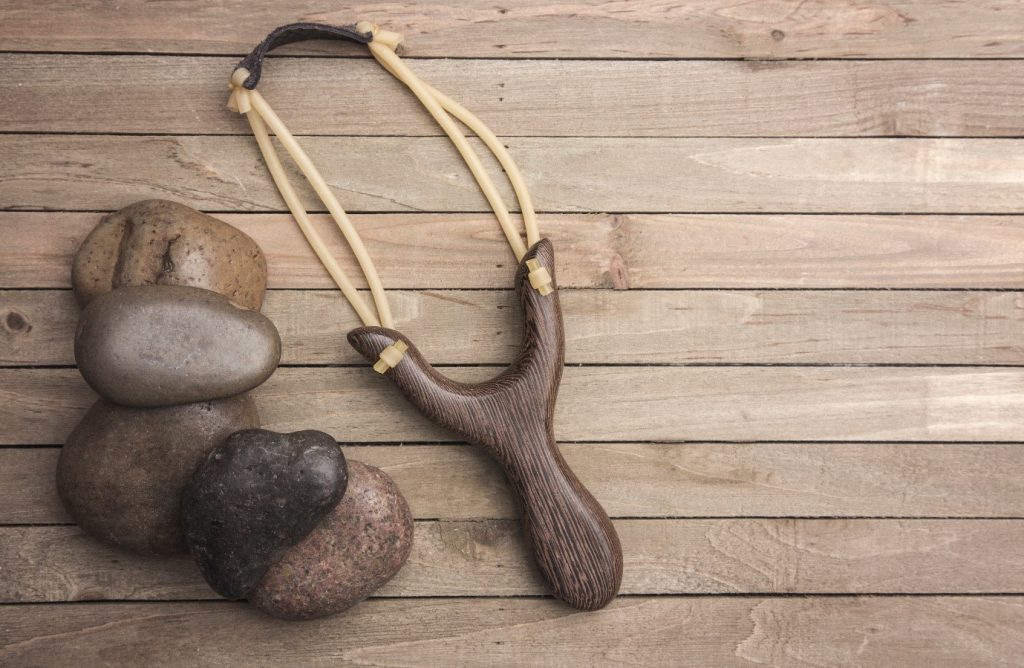The Biblical story of David and Goliath is one of triumph over a much bigger foe. David the shepherd boy volunteers to fight the giant Goliath using only his slingshot and few small stones. He slays Goliath and puts to shame the others who were too afraid to venture out.
When non-profits are hard at work prospecting for corporate partners it can feel like a David and Goliath moment. The businesses are so much bigger than you and have way more resources. But that’s why you want a partnership – to tap into all of their assets, resources and expertise for your cause. You don’t have to be Goliath sized to win a valuable partnership, but you’ll need a few well -chosen stones in your bag to get the results you want. As the story of David showed, the little things matter and they can make a huge difference to the outcome.
If you’d like to give your partnership program a big lift, then work on smoothing some of the pebbles in your armoury.
Know your tribe
Corporates want to know all about your audiences and the tribe that you’ve inspired through your marketing, communications, PR, events and thought leadership. The more detail the better, with ages, genders, demographics and locations. Corporates are looking for a way to connect authentically with the audiences that matter to them, including the niche and hard to reach ones. Just telling them that you talk to everyone in Australia from 25-65 doesn’t give them much to go on. St Kilda Mums have just run their latest Mother’s Day lunch with some valuable partners like Decjuba and L’Oreal. They can accurately describe their audience as affluent, well-educated bayside women with families, aged 35-55. It makes it a breeze to find corporate partners that want to reach that audience. Hey can be targeted, instead of wasting time with partners that don’t fit.
Build your stats and evidence
Successful partnerships appeal to both the head and the heart. You may win over the marketing team with your amazing storytelling but you’ll need some hard facts to get a proposal past the corporate CFO. Do you have facts, statistics or snippets of evidence that you can use to demonstrate the importance of your cause and the results they can achieve? Alzheimer’s UK talk about the 1 in 3 people in the UK that will develop Alzheimer’s in their lifetime. Mackillop Family Services highlight the 45,000 Australian children that are unable to live with their parents and the urgent need for foster carers. Building an evidence bank of statistics and evidence will help you drive home the urgency for action and your credibility as an expert in the issue.
Testimonial and case studies
Every time you work with a corporate you should be getting a testimonial from them. Don’t wait for the partnership to end, as you won’t be their priority. Make sure you grab it when the corporate partner is the most engaged and excited about working with you. Wherever possible develop a short case study that includes the testimonial, some great pictures or video and the outcomes you achieved for your partner and the community. When Australian Childhood Foundation pitched for a partnership with Target, they were able to bring a case study of their previous campaign with the Body Shop. ACF could show not just the funds raised but the increase staff engagement, greater store traffic and sales impact for the Body Shop. It gave Target a high level of confidence that ACF understood how to work with a retail partner.
Thorough research
David went into battle prepared with his slingshot and stones. He didn’t just borrow a sword and run headlong towards the enemy. You will get much better results if you invest the time upfront to do the desktop research. That includes reviewing annual reports, marketing strategy, 12 months of social media activity, their main competitors and their previous community partnerships. You need to develop a hypothesis about the best angle for your partnership and test it when you meet the corporate. The investment of time and effort will help you get to the important issues quickly and show the corporate prospect that you’ve done the work to really understand their situation.
Be prepared to walk away
Partnerships take time and effort and you want to be sure you’re spending it on the real opportunities. If you don’t waste time on the energy suckers, you’ll release capacity to work on the meaty partnerships with bigger value. That means making some choices up front about the types of businesses you won’t partner with, or only under limited circumstances. Polish the pebble by making some real choices about your go and no-go areas. Saying no to an incoming approach that’s not a good fit could be the best decision you make all year.
It’s often the small things, done quietly and without fanfare, that create the biggest impact. You don’t need a board member with a magic address book full of corporate CEOs. You can simply make some small changes that will give you real uplift. Like the book Atomic Habits tells us, it’s the 1% changes that set you on the path for sustainable change.

